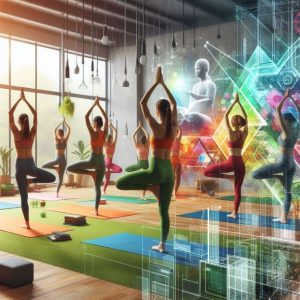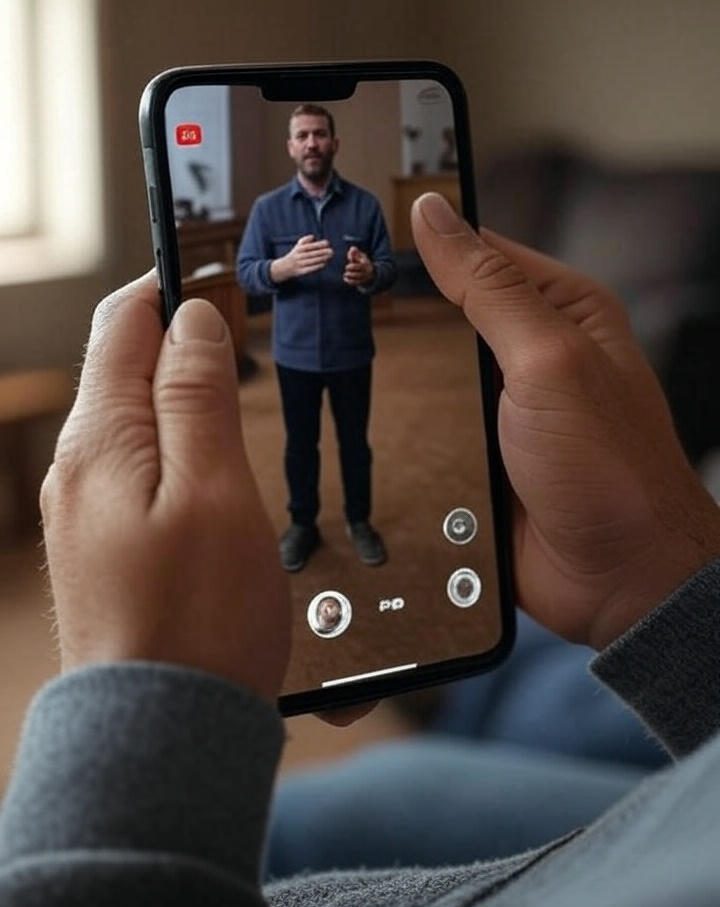Tracing Yoga’s Path from Monks to Modern Mats and Beyond the Pants
 Yoga began over 5,000 years ago in ancient India as a spiritual practice rooted in Hinduism and later Buddhism. Designed to unite body, mind, and spirit, it was a disciplined path for monks and ascetics seeking enlightenment. Ancient texts like the Rigveda and Upanishads laid the groundwork, emphasizing meditation, breath control, and ethical living. Practitioners sat in quiet contemplation, far from today’s bustling studios. Their focus was inward, aiming for liberation from worldly suffering. This sacred tradition, passed down through generations, was less about physical postures and more about mental clarity and spiritual awakening.
Yoga began over 5,000 years ago in ancient India as a spiritual practice rooted in Hinduism and later Buddhism. Designed to unite body, mind, and spirit, it was a disciplined path for monks and ascetics seeking enlightenment. Ancient texts like the Rigveda and Upanishads laid the groundwork, emphasizing meditation, breath control, and ethical living. Practitioners sat in quiet contemplation, far from today’s bustling studios. Their focus was inward, aiming for liberation from worldly suffering. This sacred tradition, passed down through generations, was less about physical postures and more about mental clarity and spiritual awakening.
The physical practice of yoga, known as asanas, emerged later but remained secondary to meditation. Early yogis used simple poses to prepare the body for long hours of stillness. Unlike the vibrant scenes of hot girls in yoga pants filling modern studios, ancient yoga was a solitary pursuit. Monks in remote ashrams practiced in minimal clothing, often just a loincloth, with no concern for fashion. The goal was discipline, not aesthetics. Over centuries, texts like Patanjali’s Yoga Sutras formalized yoga’s philosophy, outlining eight limbs that included ethics, breathwork, and meditation, with physical postures as a small but vital part.
Fast forward to the 20th century, yoga began its global journey. Indian gurus like Swami Vivekananda introduced yoga to the West, emphasizing its spiritual roots. By the mid-1900s, teachers like B.K.S. Iyengar and Pattabhi Jois popularized dynamic physical styles. Yoga started shifting from a monk’s meditation to a structured exercise. Studios popped up in cities, and yoga mats became a staple. The practice gained traction for its health benefits, improved flexibility, stress relief, and strength. Yet, it still carried a hint of its spiritual origins, blending mindfulness with movement.
The Rise of Yoga as a Fitness Trend
By the 2000s, yoga exploded into a global fitness phenomenon. Celebrities embraced it, and studios multiplied. Classes like Vinyasa and Bikram drew crowds seeking toned bodies and calm minds. Yoga’s image transformed from ascetic monks to vibrant, social settings. The practice became accessible, with gyms offering classes alongside spin and Zumba. But something else emerged: yoga as a lifestyle. Suddenly, it wasn’t just about the practice but the look, sleek leggings, branded mats, and Instagram-worthy poses.
Why did yoga’s image shift so dramatically? Commercialization played a big role. Brands like Lululemon turned yoga apparel into a status symbol. Yoga pants, once functional, became a cultural icon, synonymous with wellness and style. Retailers capitalized on the trend, marketing stretchy, flattering leggings to a broad audience. Social media amplified this, with influencers showcasing perfect poses in scenic settings. Yoga’s spiritual depth often took a backseat to its aesthetic appeal, raising questions about cultural appropriation and authenticity.
Ancient Roots vs. Modern Mats
Comparing ancient yoga to its modern form reveals stark contrasts. Here’s how they differ:
- Purpose: Ancient yoga sought spiritual liberation; modern yoga often prioritizes fitness and stress relief.
- Setting: Monks practiced in ashrams; today’s yogis gather in studios or online classes.
- Attire: Minimal clothing for ascetics; branded yoga pants and tops for modern practitioners.
- Community: Solitary practice versus group classes and social media communities.
Despite these differences, some threads remain. Both eras value mindfulness and breath. Modern teachers often weave in yoga’s philosophy, quoting Patanjali or encouraging gratitude.
“Yoga is a journey, not a destination,” says instructor Anjali Rao, blending ancient wisdom with contemporary practice. Yet, the focus on physicality and fashion sometimes overshadows this depth, leaving purists wary of yoga’s commercialization.
READ ALSO: Belief and religion: Faith still determines people’s lives
Beyond the Pants: Yoga’s Future
Yoga continues to evolve, bridging its ancient roots and modern appeal. Online platforms now offer classes for all levels, making yoga more accessible than ever. Some practitioners return to its spiritual core, exploring meditation and mindfulness. Others embrace the fitness aspect, blending yoga with HIIT or strength training. The rise of inclusive spaces, yoga for veterans, seniors, or marginalized groups, shows its adaptability. Yet, the obsession with appearances, like perfectly curated images of hot girls in yoga pants, risks diluting yoga’s essence.
Can yoga stay true to its origins while embracing modernity? Its future lies in balance. By honoring its spiritual roots while welcoming new forms, yoga can remain a transformative practice. As it spreads globally, the challenge is to keep its heart intact, beyond the mats and the pants. Yoga’s journey from monks to mainstream proves its resilience, inviting everyone to find their own path to peace.








 Millions of people now access religious teachings and services online every week. From livestreamed Sunday sermons to digital scripture study tools, the internet has become an extension of worship spaces. Faith communities are realizing that a well-organized online hub can make a big difference in keeping members engaged, informed, and spiritually connected.
Millions of people now access religious teachings and services online every week. From livestreamed Sunday sermons to digital scripture study tools, the internet has become an extension of worship spaces. Faith communities are realizing that a well-organized online hub can make a big difference in keeping members engaged, informed, and spiritually connected. Religion has long inspired the creation of beautiful and meaningful objects. From ancient relics to modern interpretations, many works of art are shaped by spiritual beliefs. One such modern material that is beginning to find a place in religious spaces and expressions is HaanGlas VIG. This unique glass-like medium combines beauty, durability, and symbolism, making it a fitting choice for environments where faith is central.
Religion has long inspired the creation of beautiful and meaningful objects. From ancient relics to modern interpretations, many works of art are shaped by spiritual beliefs. One such modern material that is beginning to find a place in religious spaces and expressions is HaanGlas VIG. This unique glass-like medium combines beauty, durability, and symbolism, making it a fitting choice for environments where faith is central. Churches have traditionally been centers for worship, community, and connection. From weekly services to seasonal events, these gatherings often extend beyond sanctuary walls. In recent years, many churches have begun reimagining their outdoor spaces to accommodate the growing need for flexible, comfortable, and welcoming environments.
Churches have traditionally been centers for worship, community, and connection. From weekly services to seasonal events, these gatherings often extend beyond sanctuary walls. In recent years, many churches have begun reimagining their outdoor spaces to accommodate the growing need for flexible, comfortable, and welcoming environments. Every home holds a sanctuary. Whether it’s a quiet corner for prayer, a cushioned nook for meditation, or a family room where loved ones gather for reflection, these spaces carry deep meaning. Cleanliness in these areas isn’t just about appearance. It’s about creating an environment that feels pure and welcoming. Upholstered furniture, like sofas or armchairs, often anchors these sacred spots. Keeping them spotless enhances the spiritual experience, fostering peace and clarity.
Every home holds a sanctuary. Whether it’s a quiet corner for prayer, a cushioned nook for meditation, or a family room where loved ones gather for reflection, these spaces carry deep meaning. Cleanliness in these areas isn’t just about appearance. It’s about creating an environment that feels pure and welcoming. Upholstered furniture, like sofas or armchairs, often anchors these sacred spots. Keeping them spotless enhances the spiritual experience, fostering peace and clarity.
 Meet Olen Thompson, founder of the Truckers Ministries, which he chaplains by providing counselling and fellowship for truck drivers and transients; or to anyone who enters the semitrailer that he converted into a chapel. Being a former heavy duty towing truck driver who hauled heavy equipment across the US, Olen is able to relate to the challenges and hardships of being on the road for months.
Meet Olen Thompson, founder of the Truckers Ministries, which he chaplains by providing counselling and fellowship for truck drivers and transients; or to anyone who enters the semitrailer that he converted into a chapel. Being a former heavy duty towing truck driver who hauled heavy equipment across the US, Olen is able to relate to the challenges and hardships of being on the road for months. Now a Free Methodist elder, he and other members of the Truckers Ministries act as chaplains. They provide help whatever and whenever needed by people seeking to get closer to Christ in order to be led out of deeper waters. Trucker Ministries operate mainly on donations given by employees of trucking companies.
Now a Free Methodist elder, he and other members of the Truckers Ministries act as chaplains. They provide help whatever and whenever needed by people seeking to get closer to Christ in order to be led out of deeper waters. Trucker Ministries operate mainly on donations given by employees of trucking companies.

 When going on a road trip, it is important that you plan ahead of time and prepare all necessary things you need for the trip. Travel pillows and blankets, a first aid kit, chargers, extra batteries, headlamps and/or flashlights, your driver’s license, car registration as well as insurance Information, spare tire, and keys are among the things you need to prepare. While these are all important, it is also imperative that your car is regularly checked, serviced, and maintained even before you have planned the road trip to ensure your vehicle is in excellent condition and in optimal performance when you head out.
When going on a road trip, it is important that you plan ahead of time and prepare all necessary things you need for the trip. Travel pillows and blankets, a first aid kit, chargers, extra batteries, headlamps and/or flashlights, your driver’s license, car registration as well as insurance Information, spare tire, and keys are among the things you need to prepare. While these are all important, it is also imperative that your car is regularly checked, serviced, and maintained even before you have planned the road trip to ensure your vehicle is in excellent condition and in optimal performance when you head out. Begin Your Travel With A Prayer
Begin Your Travel With A Prayer So you cannot afford not to celebrate your diversity and should learn how you can still live together.
So you cannot afford not to celebrate your diversity and should learn how you can still live together.
 Moving a church is no small task. It’s about packing pews and furniture and relocating
Moving a church is no small task. It’s about packing pews and furniture and relocating 


 Thai massage is the most requested home tie (홈타이) service from Korean providers of home massage treatments rendered by a Thai Manager and a blind Thai masseuse. While this type of service is hard to come by just by searching for a home service massage, those in the know, use an intermediary
Thai massage is the most requested home tie (홈타이) service from Korean providers of home massage treatments rendered by a Thai Manager and a blind Thai masseuse. While this type of service is hard to come by just by searching for a home service massage, those in the know, use an intermediary  Actually, Thai massage is of Indian origin, as it was developed 2500 years ago by Buddha’s Indian doctor and friend. As Buddhism flourished and spread in various South-East Asian monasteries, it gained popularity in Thailand as a massage service rendered outside of Buddhist monasteries.
Actually, Thai massage is of Indian origin, as it was developed 2500 years ago by Buddha’s Indian doctor and friend. As Buddhism flourished and spread in various South-East Asian monasteries, it gained popularity in Thailand as a massage service rendered outside of Buddhist monasteries.




 Social media is essential to connect and engage with audiences of all kinds. Churches can leverage the power of social media to reach a wider community, share their message, and foster meaningful connections. This article will explore
Social media is essential to connect and engage with audiences of all kinds. Churches can leverage the power of social media to reach a wider community, share their message, and foster meaningful connections. This article will explore  As a matter of fact, the administration of AU Prime Minister Scott Morrison recognized the need of different religious
As a matter of fact, the administration of AU Prime Minister Scott Morrison recognized the need of different religious  either to a Network Video Recorder (NVR) that stores the recorded footage; or to a server-based Video Management System (VMS).
either to a Network Video Recorder (NVR) that stores the recorded footage; or to a server-based Video Management System (VMS).
 Religion is a crucial part of many people’s lives, and in today’s digital age, religious organizations need to have a strong online presence. A well-designed website by website design Hamilton can serve as a platform for communicating with members, reaching out to potential followers, and offering valuable resources. Here are some tips and best practices for designing religious websites that are user-friendly, accessible, and engaging.
Religion is a crucial part of many people’s lives, and in today’s digital age, religious organizations need to have a strong online presence. A well-designed website by website design Hamilton can serve as a platform for communicating with members, reaching out to potential followers, and offering valuable resources. Here are some tips and best practices for designing religious websites that are user-friendly, accessible, and engaging. In today’s world, where technology significantly impacts our daily lives, social media platforms like Instagram have become an essential tool for communication, entertainment, and self-expression. However, Instagram is not only used for these purposes but also for religious expression and practices.
In today’s world, where technology significantly impacts our daily lives, social media platforms like Instagram have become an essential tool for communication, entertainment, and self-expression. However, Instagram is not only used for these purposes but also for religious expression and practices.




 If your food manufacturing company is planning to implement a digital strategy, acknowledging the need for a digital system is a significant first step. The road toward digital transformation is long and complicated. But don’t worry, there are marketing professionals who can guide you, click on manufacturing search marketing.
If your food manufacturing company is planning to implement a digital strategy, acknowledging the need for a digital system is a significant first step. The road toward digital transformation is long and complicated. But don’t worry, there are marketing professionals who can guide you, click on manufacturing search marketing.
